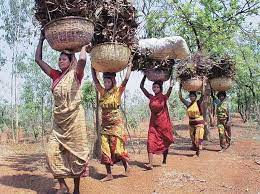CURRENT AFFAIRS
Get the most updated and recent current affair content on Padhaikaro.com
The ‘Scheduled Tribes and Other Traditional Forest Dwellers
- IAS NEXT, Lucknow
- 01, Mar 2022

Reference News:-
The Himachal Pradesh government has said that it settled 164 claims filed under Section 3(1) and 1,811 cases filed under Section 3(2) of the Forests Rights Act (FRA), 2006.
About the Forest Rights Act:
The Act passed in 2006 grants legal recognition to the rights of traditional forest dwelling communities.
Rights under the Act:
- Title rights – i.e. ownership – to land that is being farmed by tribals or forest dwellers as on 13 December 2005, subject to a maximum of 4 hectares; ownership is only for land that is actually being cultivated by the concerned family as on that date, meaning that no new lands are granted.
- Use rights – to minor forest produce (also including ownership), to grazing areas, to pastoralist routes, etc.
- Relief and development rights – to rehabilitation in case of illegal eviction or forced displacement; and to basic amenities, subject to restrictions for forest protection.
- Forest management rights – to protect forests and wildlife.
Eligibility criteria:
According to Section 2(c) of Forest Rights Act (FRA), to qualify as Forest Dwelling Scheduled Tribe (FDST) and be eligible for recognition of rights under FRA, three conditions must be satisfied by the applicant/s, who could be “members or community”:
- Must be a Scheduled Tribe in the area where the right is claimed; and
- Primarily resided in forest or forests land prior to 13-12-2005; and
- Depend on the forest or forests land for bonafide livelihood needs.
And to qualify as Other Traditional Forest Dweller (OTFD) and be eligible for recognition of rights under FRA, two conditions need to be fulfilled:
- Primarily resided in forest or forests land for three generations (75 years) prior to 13-12-2005.
- Depend on the forest or forests land for bonafide livelihood needs.
Process of recognition of rights:
- The gram sabha, or village assembly, will initially pass a resolution recommending whose rights to which resources should be recognised.
- This resolution is then screened and approved at the level of the sub-division (or taluka) and subsequently at the district level.
The screening committees consist of three government officials (Forest, Revenue and Tribal Welfare departments) and three elected members of the local body at that level. These committees also hear appeals.